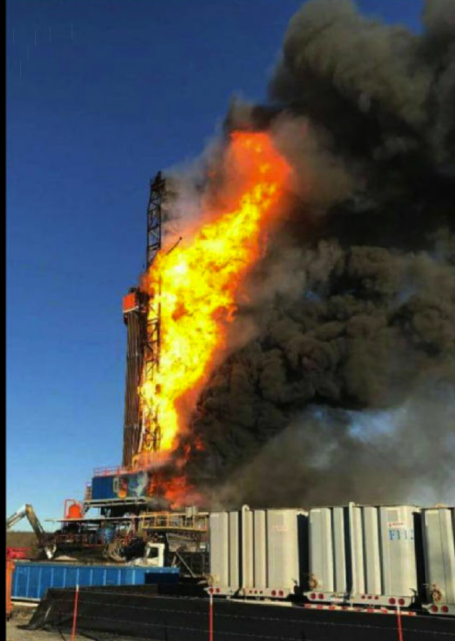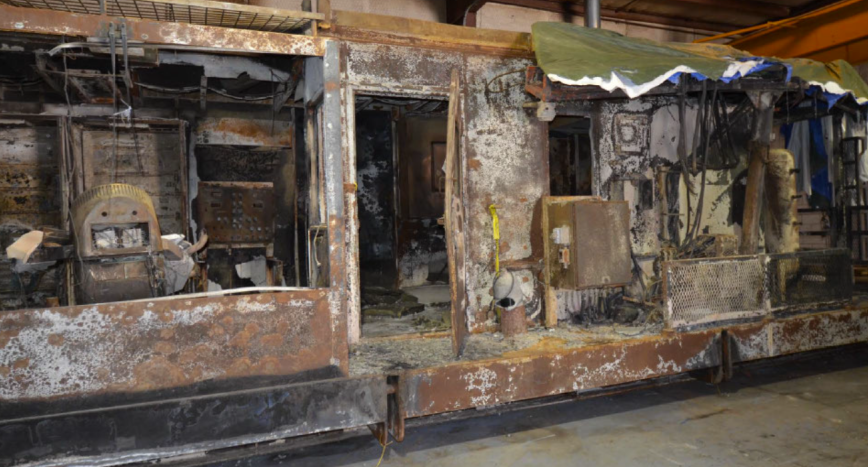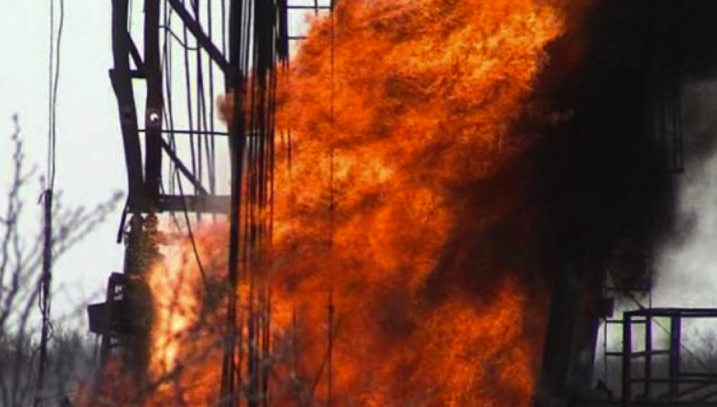Blowouts and Oil Rig Explosions
Since 1970, according to the U.S. Energy Information Administration (EIA), the State of Texas has been the number one producer of crude oil in this country, with over a quarter of the United States’ 100 largest oil field reserves located in Texas. Beginning in 2010, hydraulically fractured horizontal oil wells have caused a resurgence in Texas’ production rates, particularly from wells drilled in the Permian Basin and the Eagle Ford Shale.
As for natural gas, Texas holds over one-fourth of the country’s natural gas reserves and is home to approximately one-third of the country’s largest natural gas fields. Horizontal drilling and fracking in the 2000s have also spurred a rise in Texas’ natural gas production. According to the EIA, Texas led the country in natural gas production with over 10.2 trillion cubic feet of natural gas produced in 2019.

What is a Blowout?
In industry jargon, a “blowout” has in past years been called a “gusher” or “wild well” because the operator has lost control of the well and either crude oil or natural gas (or a combination of the two) is spewing out at a tremendous rate, similar to the huge and high geysers of water gushing out of Yellowstone’s Old Faithful.
However, an oil & gas blowout is far from the natural beauty of a national park geyser phenomenon. In a blowout, protocols and processes to keep control of that well and the drilling operations have failed.
The result is an extremely dangerous situation. The likelihood of the erupting fuel to ignite and result in a catastrophic and deadly blaze is exceedingly high. Lives are lost and the environmental harm can be incalculable.
Deepwater Horizon
Perhaps the most well-known blowout is the travesty that occurred in the Gulf of Mexico, when the oil drilling rig named “Deepwater Horizon” exploded in April 2010, killing eleven (11) workers on the rig itself and allowing 4,000,000 barrels of oil to flow into the Gulf of Mexico before the rig was capped 87 days after the explosion occurred. For details, read the Environmental Protection Agency’s case history and synopsis, including the $5.5 billion federal Clean Water Act penalty and added $8.8 billion in natural resource damages assessed against rig owner and operator BP Exploration & Production.
What Causes Blowouts?
Anyone employed in the Oil & Gas Industry is aware that merely being around an oil or gas rig puts them at risk of an explosion or a fire simply because they are dealing with a flammable product. Static electricity, cigarettes, as well as on-site equipment like welding tools can kindle a catastrophe.
However, workers must depend upon the owner and operator of the drilling rig to preserve their safety as the product is being extracted. See, “Safety Hazards Associated with Oil and Gas Extraction Activities,” published by the Occupational Safety & Health Administration (OSHA).
When working in drilling operations, the owner and operator of the rig has a duty to control that well and prevent pressure from building up, resulting in a gusher or blowout. Well control is the legal responsibility of the owner and operator of the drilling site. This is done through (1) drilling fluid pressure monitoring and (2) Blowout Preventers.
Failure in either control arm of that oil well can cause a deadly and destructive blowout.
1. Drilling Fluid Pressure Monitoring
Companies must understand the pressure dynamics that exist as oil or gas is being pulled from its origins and placed into production. The underground fuel (gas, oil) naturally exists under pressure called “formation pressure.” When the extraction occurs, drilling creates its own pressure. In industry terms, this is called “mud pressure.”
It is imperative that these two pressures are carefully monitored at all times during the drilling and extraction process. If the natural formation pressure exceeds the drilling mud pressure, then there is the risk of a blowout.
2. Blowout Preventers (BOPs)
Alongside human supervision of the drilling operations to protect against blowouts is a range of equipment developed within the industry to assist in well control. Collectively, they are called “blowout preventers” (BOPs).
BOPs consist of specialized products made specifically for drilling purposes. They are a vital component of the rig’s design and should be installed and tested before drilling operations begin. Routine BOP pressure tests are required both by federal regulation (14 days) and industry standards (21 days), as well. See, e.g., “Examination of Blowout Preventer Pressure Test Frequency,” prepared by the U.S. Department of Energy’s Argonne National Laboratory for the Bureau of Safety and Environmental Enforcement and published May 2019.
The BOPs and their corresponding valves are placed on top of the casing head. They work to shut off the well if need be, thereby blocking any rush of underground oil or gas and shielding against a blowout.
The BOP equipment installed to protect against blowouts includes:
- BOP Stack
- Annular BOP
- Ram-Type BOP
- Choke Manifold
- Accumulator.
For details, see the descriptions and images provided online by OSHA.
Liability for Blowouts
When a blowout happens, lives can be lost in both an initial explosion as well as in the raging fire fueled by the gushing oil or gas. Environmental harm from the escaping fuel will also have a widespread and long-lasting impact.
In these situations, both the victims of the blowout as well as their loved ones may have legal claims to assert against the owner and operator of the drilling operations and the rig itself, as well as against others involved in the process including developers, producers, sellers, and maintenance companies involved with faulty BOP equipment.
Investigations will reveal the cause of the blowout. The Deepwater Horizon blowout, for example, was later determined to have been caused by a faulty BOP. For more, read “BP Shortcuts Led to Gulf Oil Spill, Report Says,” written by John M. Broder and published in the New York Times on September 15, 2011.
REPRESENTING VICTIMS OF BLOWOUTS AND OIL RIG EXPLOSION ACCIDENTS
WigRum is proud to represent victims seeking justice from some of the most powerful oil companies in the world in the aftermath of severe and deadly blowouts and oil rig explosions. Those who have failed in their duty of care to keep people safe and thereby cause serious injury or death can be made to pay damages to the victims and their families that include medical claims and economic harm, as well as the possibility of punitive damages.
Our representations on behalf of Blowout and Oil Rig Explosion Accident victims include the following:

Largest Jury Verdict in County’s History for Victims of Deadliest Oil Drilling Accident since Deepwater Horizon
In January 2020, an Oklahoma jury awarded $20,000,000.00 in a wrongful death lawsuit brought in the aftermath of the Patterson 219 oil rig fire near Quinton, Oklahoma, on January 22, 2018, considered to be the deadliest drilling accident since the 2010 Deepwater Horizon rig explosion in the Gulf of Mexico.
The $20 Million Jury Verdict is the largest jury verdict in the history of Pittsburg County and one of the largest verdicts ever rendered in the State of Oklahoma.
For more, read the extensive News Coverage of this case.
Iraqi Rig BOP Failure: Hero’s Wrongful Death
On November 16, 2018, Andrew Hutchison was working as an overnight tool pusher on a drilling rig located in the Kurdistan Region of Iraq. That night, a BOP failure happened when a valve failure allowed drilling mud to shoot to the ground surface along with hydrogen sulfide, a poisonous gas.
Mr. Hutchison, a husband and father of four minor children, heroically died trying to save a co-worker who had been thrown back onto the rig floor from the unanticipated pressurized release of poisonous gas and mud. He pulled his co-worker to safety. Tragically, Andrew Hutchison perished while trying to escape himself, suffering fatal exposure to the toxic gas being released in the blowout.
WigRum represents the Estate of Andrew Hutchison, his widow and their four children in their Wrongful Death action against those responsible for his death with a suit filed August 2020 in 152nd Judicial District Court of Harris County, Texas.
2015 Oil Rig Explosion: Wrongful Death

On March 10, 2015, Rojelio Salgado was working on a pulling unit of a well operated by Parsley Energy; he was following instructions to repair a leak in the well's tubing. Despite knowing that the well needed to be killed prior to work over operations, Parsley Energy (1) failed to kill the Well;(2) to ensure that a kill truck was available at the Well; or (3) to warn Mr. Salgado about the danger of working on the Well without first killing it.
There was a well kick. Because the well was not killed, Mr. Salgado and two of his co-workers were covered in oil, gases, and other combustible materials which immediately ignited and exploded. Mr. Salgado’s entire body was burned by the horrific fire, except for the areas protected by his work boots.
WigRum represented the Estate of Rojelio Salgado and his parents in the resulting wrongful death action which was settled for a confidential sum.
For more details on Blowouts and Oil Rig Explosions, review summaries of our past cases, as well as details provided of past Verdicts and Settlements.
Regarding our representation of victims and their loved ones who have suffered as a result of wrongdoing by the Oil & Gas Industry, also see:
